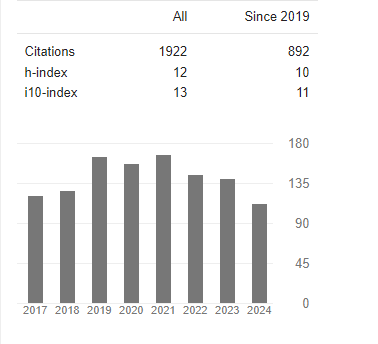Development and Characterization of Silicon Carbide Coating on Graphite Substrate
Abstract
FZ Mohammad, M Akhtar Sharif, M Anas Ahmed, Muhammad Suhail
The development of materials with unique and improved properties using low cost processes is essential to increase performance and reduce cost of the solid rocket motors. Specifically, advancements are needed for boost phase nozzle. As these motors operate at very high pressure and temperatures, the nozzle must survive high thermal stresses with minimal erosion to maintain performance. Currently three material choices are being exploited; which are refractory metals, graphite and carbon-carbon composites. Of these three materials graphite is the most attractive choice because of its low cost, light weight, and easy forming. However, graphite is prone to erosion, both chemical and mechanical, which may affect the ballistic conditions and mechanical properties of the nozzle. To minimize this erosion Pyrolytic Graphite (PG) coating inside the nozzle is used. However, PG coating is prone to cracking and spallation along with very cumbersome deposition process. Another possible methodology to avoid this erosion is to convert the inside surface of the rocket nozzle to Silicon Carbide (SiC), which is very erosion resistant and have much better thermal stability compared to graphite and even PG. Due to its functionally gradient nature such a layer will be very adherent and resistant to spallation. Despite its very good adhesion due to its functionally gradient nature, this layer due to its porous nature exhibit poor oxidation performance compared to a dense SiC layer. The current research is focused on synthesizing, characterizing and oxidation testing of a bi-layer; a functionally gradient inner layer and dense outer layer, SiC coating on graphite.



